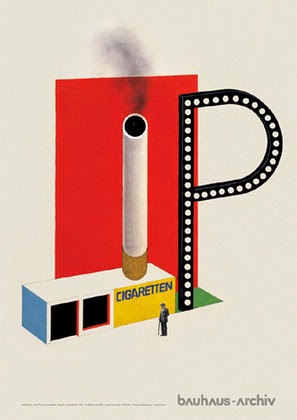An artist that wanted to redesign the way that we think about art by changing the way photography works was Lazlo Maholy-Nagy. Instead of trying to imitate art like many photographers have done, it is 'unimportant whether photography produces art or not' for Maholy-Nagy, as the mediums future worth should be what photography decides it value by. This reason is why Maholy-Nagy decides to over-perspectivise his photos, where there are multiple or extreme perspectives that at first confuse the viewer and make strange what is being depicted. Berlin Radio Tower from 1928 is a photograph taken from a birds eye viewer atop the tower, with the structure of the tower itself entering into the frame. This vertiginous metal framework appears to go on endlessly in either direction, into the ground and sky, and at once confuses and makes strange the object represented. The shadows from the settings sun are long and spread across the landscape, offering another angle of perspective. Maholy-Nagy was often criticised by his avant garde counterparts as being uncommited to any political motive in his photography, which ultimately make him as bad as the traditional artists that came before him. Devin Fore uses theories of perspective through time to understand whether this claim is true, as unlike the Constructivists or Dada, who completely negate all perspective from their work, Maholy-Nagy uses multiple perspectives. Linear perspective has come to be seen as something that is tied up in the romantic ideals of art, and to use in art during the avant garde could be seen as compliance with these traditional values. For Fore however, the artists over use of perspective still negates traditional art, as it uses its own means of rational to confuse itself.
Leda and the Swan from 1925 is a form of collage that uses the white plane as a perspectival background, with the collage forming an 'organised chaos' on the clean plane of vision. This 'chaos' offers the viewer a type of representational organisation with coherent depth and spatial volume. Instead of calling these 'photomontages', Maholy-Nagy calls them 'photoplastics', as they have much more coherence than the usual montages of the avant garde.
Images to use:



No comments:
Post a Comment